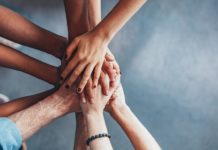An anxious mother arrives in the emergency department with a child with an unexplained injury. A nurse assesses the injury but subconsciously also ‘assesses’ the mother’s socio-economic status and ethnicity and makes an unwitting assumption about whether the injury is accidental or not. How could the nurse respond to be a more culturally safe and reflexive practitioner?
In our first two articles we talked about reflection, self-awareness and being relational as important aspects of cultural safety. These same concepts and practices are also critical to becoming a reflexive practitioner which is the focus of our third article. There are many and varied definitions, and uses, of the term reflexivity and in this article we hope to clarify the term’s meaning and use in cultural safety education and practice.
As part of teaching cultural safety and anti-racism approaches we ask our students to reflect on how, for example, a female patient’s perspective and world view may differ from that of a male patient. Or how a client’s viewpoints may differ if they have a disability or a long-term condition. We also ask them to imagine how they as nurses in the future will consider and respond to those differing world views.
Through developing their knowing of themselves as future nurses they also consider how they, perhaps unwittingly and naively, play a role in social processes (historical, economic and political) that allow the continuation of inequities and the marginalisation of some people.
Reflexivity, in this context, is being aware of oneself and the person/people that we are working with as we communicate with them, noticing the effects of who we are, our ways of communication and then being responsive to what we notice. To do this it helps to have some knowledge and understanding of cultural norms, particularly our own and also those of the people we work with. However, often we do not have that cultural knowledge, or our knowledge is only partial, therefore we also need to be able to manage and work from a place of ‘not knowing’. In our research with students they noticed how valuable this approach could be:
In a way I feel relieved as I now realise that I don’t have to know every culture’s specific values and belief systems. If I develop my knowledge and skills on how to form relationships with patients, allowing for self-determination, I feel that not only will I practise cultural [sic] safe nursing but it may also enhance the health care and outcome of the patients. (Janet)
Reflexivity encompasses paying attention to the emotional and relational aspects of what is happening as well as understanding the broader societal influences both past and present. In particular being reflexive (see figure next page) asks us to question how power affects relationships, and also how what we perceive as ‘common sense’ affects relationships. Or as one student noted:
Just because someone in authority said something is true does not mean that it is true. One has to do his or her own research as well in order to validate the information given. (Adi)
We can do this by thinking during our day-to-day interactions about whose world views and standards of living are the most privileged – or given the most legitimacy and credibility – and how this impacts on behaviours.
 Mother and child scenario
Mother and child scenario
Let us return to the scenario we opened this article with. A mother brings her child into the emergency department with an unexplained injury. What assumptions does the nurse make? What assumptions do the rest of the team make? And how does the mother anticipate she will be perceived – with empathy or suspicion?
Some of this will depend on the mother’s ethnicity and socio-economic position because the impression gained from media headlines can be that family violence occurs predominantly within one social sphere. While this is not the case it enters the subconscious unbidden. This is more likely to happen if people are uncritical about how people and situations are talked about.
How should a nurse respond reflexively to this mother and her child? To begin with the nurse can reflect on and recognise their own ‘ready-to-hand’, automatic thoughts; while at the same time making a conscious decision to keep an open mind because children hurt themselves all the time. Nurses also need to recognise the mother’s fears and concern for her child and respond relationally, to put her at ease as much as is possible.
What we are talking about are “skills of listening and noticing, and on ways of allowing oneself to be affected by the other [person/people] whilst also maintaining a reflective distance.” Part of the work we need to do as practitioners is to develop as many standpoints or views of a situation as we possibly can so that we do not settle for the most obvious conclusion.
So practitioners should keep alive several possibilities for what happened to the child until more information is available. For example, the child may have been in the care of someone else and so the mother does not know what happened, the mother’s attention was on another child or some other task when the accident happened, the child is an energetic child that pushes its physical abilities beyond its capacity, the child did normal child things and hurt itself, another child was too rough in play… there are many possibilities. At the same time we experience concern for the mother and the situation that she finds herself in, feeling judged, feeling afraid, feeling concerned, feeling disempowered in an alien environment…
By being relationally engaged with the mother and her child we can avoid the risk of perpetuating stigma and marginalisation because we recognise this mother as an individual and not a stereotype. At the same time we are aware of being in a position of power due to the authority given to us by the institution (hospital) that we work for, by our discipline (nursing) and authority we carry by reflecting the dominant cultural values and beliefs.
I now have a greater understanding of this term [cultural safety]. I like the fact that it places accountability on the nurse, making the nurse aware that difference exists and that there is also a power imbalance. (Liz)
I also feel that understanding my own culture and identity has helped me to have an open mind towards other cultures and this has helped me to understand the prejudiced views I have about other cultures. (Sophie)
One way of consciously thinking about this may be through using what some British nursing academics have called ‘inequalities imagination’. Using our imagination we can visualise creative responses to complex situations such as our example above. Sometimes this may mean understanding our limitations and noticing that others are able to work more relationally than we can at present. This approach may also allow nurses to imagine a broader range of responses than those they might otherwise have in the moment.
A key aspect of developing an ‘inequalities imagination’ involves putting into practice a questioning approach to the subject of inequalities and disadvantage. It also involves thinking of the different constellations of disadvantage that may come into play for each individual client.
When thinking about the way that society works we might also consider how common ways of talking about health and people’s circumstances reinforce stereotypes and continue to marginalise people. Significantly, being reflexive asks nurses to think about health equity or consider the unfair distribution of resources that support good health. This is particularly relevant in Aotearoa New Zealand where the effects of colonisation and the dominance of neoliberal socio-economic ideologies still contribute to health inequities.
I can see other people’s perspectives and understand why they may feel differently about it, for example I can see how a Pākehā person may have the attitude that we as a society need to move on. But, I can also see how unjust this would be to the indigenous population of Aotearoa if we all just ‘forgot’ the past and moved on. (Kath)
This approach also recognises the complexity of health – and the importance of targeted interventions that reflect this complexity – so it is bigger than simply illness prevention.
I may not be able to stop worldwide racism or discrimination but I can do everything in my power within my ‘own world’ to stop it. As a mother it is my job to educate my children (New Zealand’s next generation) in non-discriminatory behaviour, and the best way I can achieve this is by being a role model, and this is something I can also implement in my nursing practice. (Liz)
Conclusion
The intention of our research was to gauge an understanding of the effects of particular learning and teaching strategies on students’ ways of knowing and whether these strategies were assisting the development of greater complexity in thinking.
We have shown that thinking did become more complex and students demonstrated an increasing willingness to be open to alternative perspectives. For students to process challenging material they needed to feel safe in tutorial groups and facilitating this sense of safety was a critical aspect of the teaching.
Particularly important was being aware of the processes and reflection needed to develop greater complexity in thinking, and the
significant effect this can have on relational and reflexive ways of being to develop culturally safe practice. :
 |
 |
| Sallie Greenwood | Katrina Fyers |
AUTHORS:
Katrina Fyers MA, RGON, is a senior academic staff member at the Centre for Health and Social Practice, Wintec.
Sallie Greenwood PhD, MSocSci, RGN, is a principal academic staff member at the Centre for Health and Social Practice, Wintec.
References:
- Hartrick Doane, G., & Varcoe, C. (2005). Family nursing as relational inquiry: developing health-promoting practice. Philadelphia : Lippincott Williams & Wilkins
- Nairn, S., Chambers, D., Thompson, S., McGarry, J., & Chambers, K. (2012). Reflexivity and habitus: opportunities and constraints on transformative learning. Nursing Philosophy, 13(3), 189-201. doi:10.1111/j.1466-769X.2011.00530.x
- Elliott, H., Ryan, J., & Hollway, W. (2012). Research encounters, reflexivity and supervision. International Journal of Social Research Methodology, 15(5), 433-333.
- Hart, A., Hall, V., & Henwood, F. (2003). Helping health and social care professionals to develop an ‘inequalities imagination’: a model for use in education and practice. Journal of Advanced Nursing, 41(5), 480-489. doi:10.1046/j.1365-2648.2003.02555.x
- Reid, P., & Robson.[1] (2007). Understanding health inequities. In B. Robson & R. Harris (Eds). Hauora: Māori Standards of Health IV. A study of the years 2000-2005. pp. 3-10. Wellington, New Zealand: Te Rōpū Rangahau Hauora a Eru Pōmare.





















